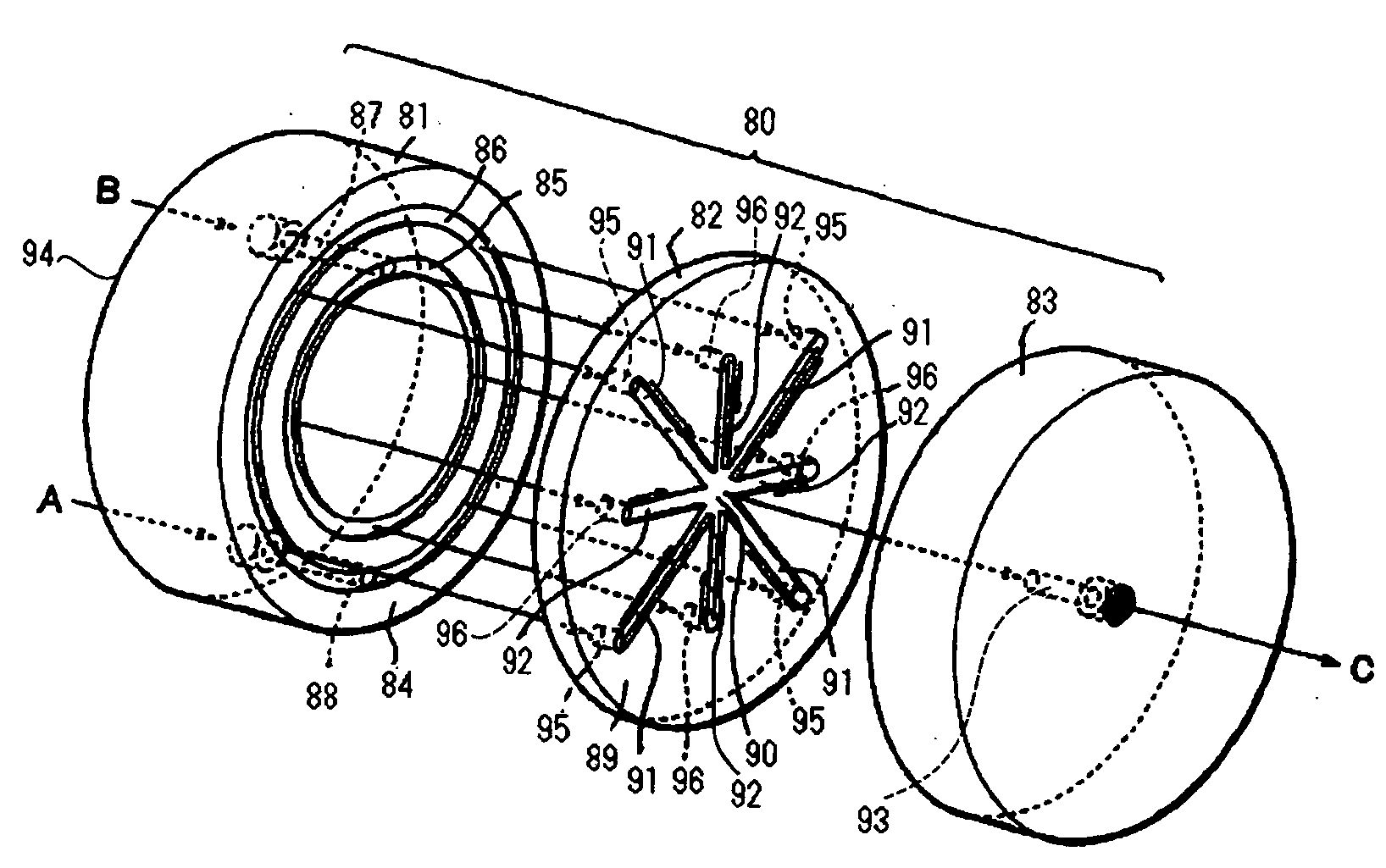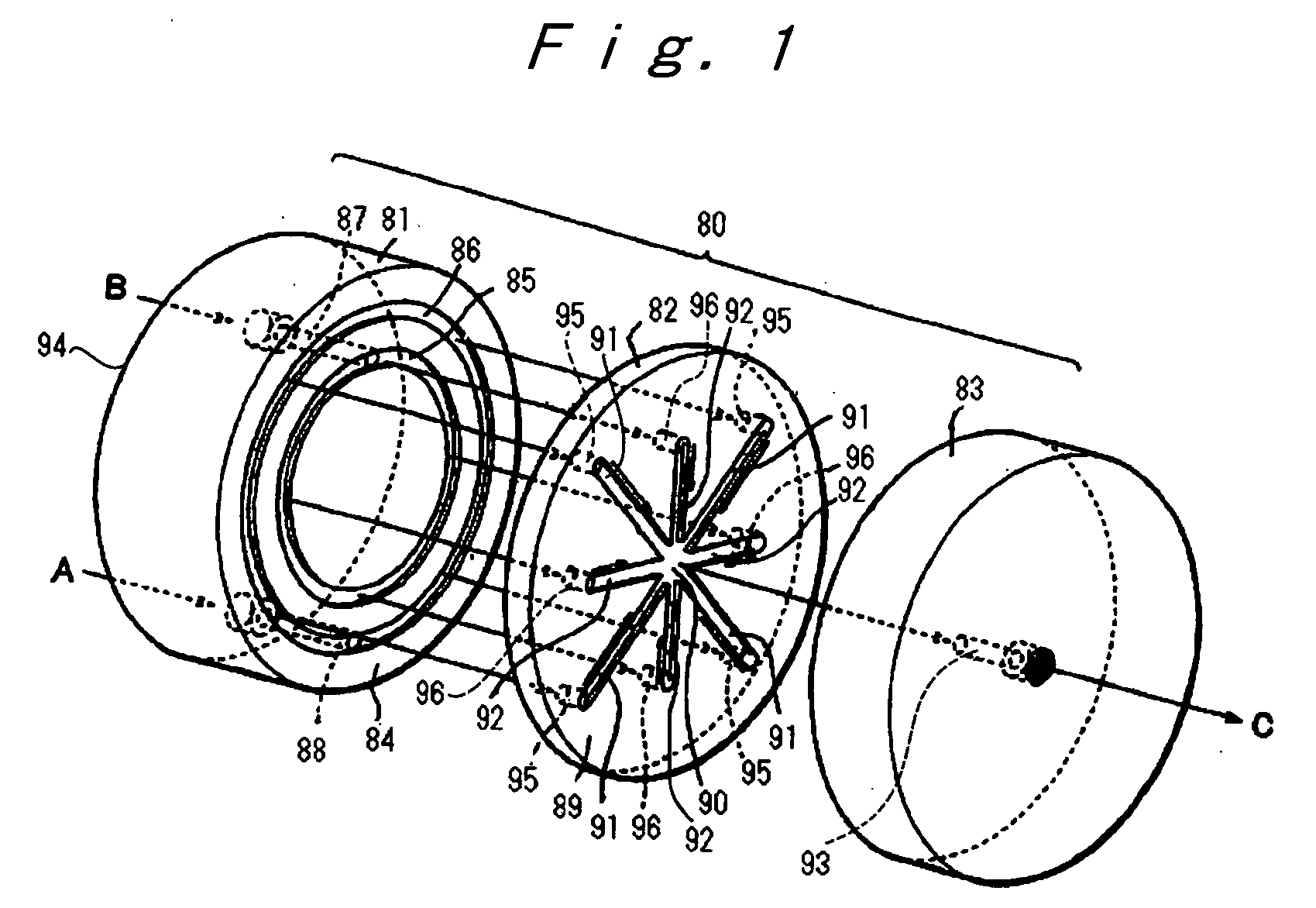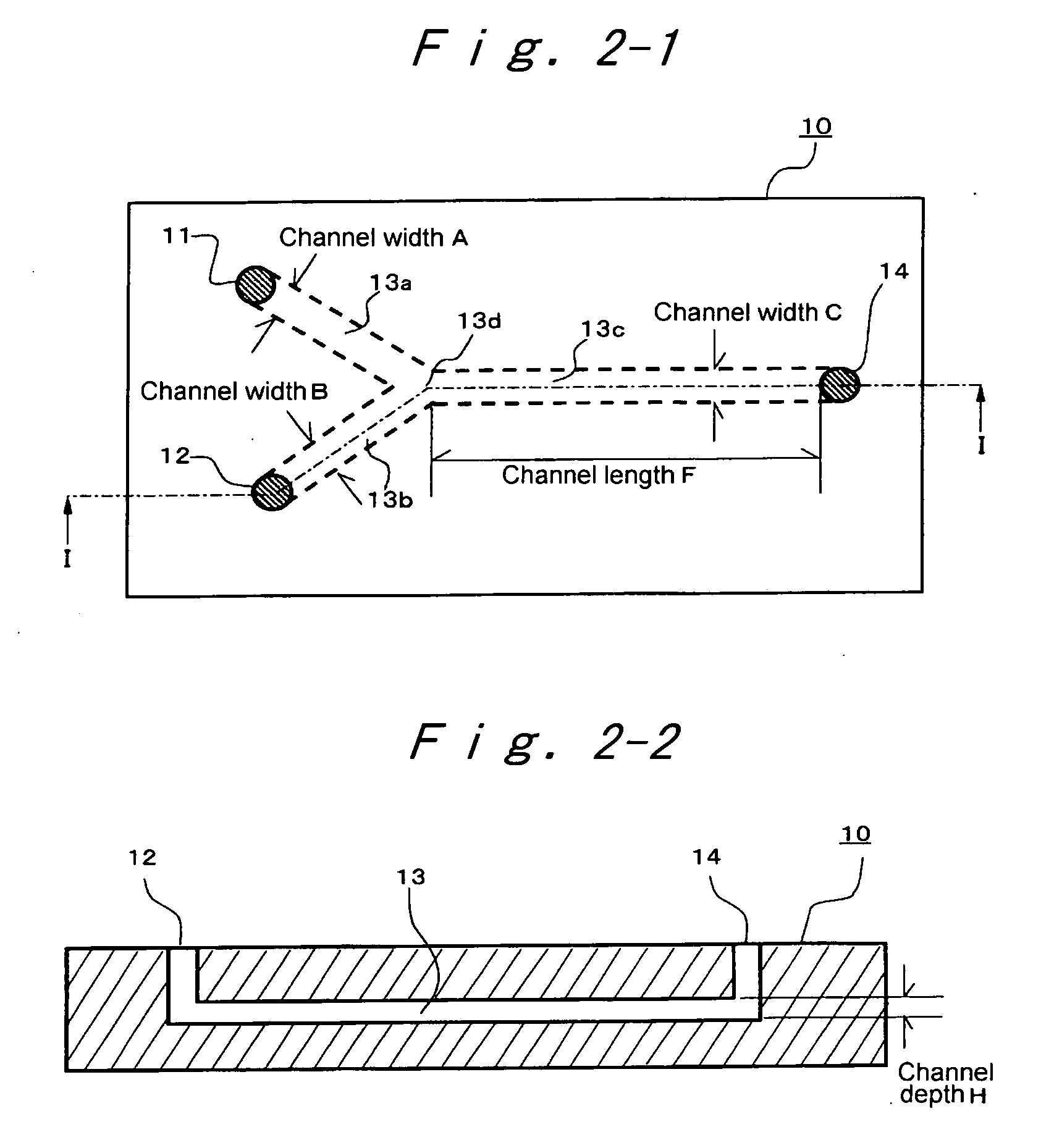Organic-pigment aqueous dispersion, method of producing the same, and colored coating composition and coated article using the same
a technology of organic pigments and aqueous dispersions, applied in the direction of magnetic materials for record carriers, instruments, transportation and packaging, etc., can solve the problems of difficult control of painting lines, increased film thickness and color darkening in the edge regions, and insufficient color depth and high color saturation of metal coated films, etc., to achieve low haze, low haze, high efficiency
- Summary
- Abstract
- Description
- Claims
- Application Information
AI Technical Summary
Benefits of technology
Problems solved by technology
Method used
Image
Examples
example 1
[0131]First, 0.5 g of 2,9-dimethylquinacridone (PR122, manufactured by Clariant, HOSTAPERM PINK E, trade name) was mixed with 7.0 mL of dimethylsulfoxide, 0.85 mL of methanol solution (manufactured by Wako Pure Chemical Industries, Ltd.) of 28% sodium methoxide, and 0.5 g of Exemplified compound (I), to prepare a homogeneously solution, which is designated to Liquid IA. The pH of the Liquid IA exceeded the measuring limit (pH 14), and was not able to be measured. Distilled water was designated as Liquid IIA. They were allowed to pass through a micro-filter of 0.45 μm (manufactured by Sartorius Co.), to remove impurities such as dust. Then, the reaction was effected in the following procedure, using a simple reactor having a channel configuration of a reactor in FIG. 2-1. More specifically, two Teflon (Registered Trademark) tubes having a length of 50 cm and an equivalent diameter of 1 mm were connected to two inlets of a Teflon (Registered Trademark) Y-shaped connector (manufactured...
example 2
[0133]A stirrer was placed in a 50 mL beaker, and 25.0 mL of the Liquid IIA (just distilled water) of Example 1 was stirred at room temperature. Then, 0.5 mL of the Liquid IA prepared in Example 1 was poured to the Liquid IIA with a syringe to obtain a dispersion of 2,9-dimethylquinacridone (PR122). The pH of the dispersion was about 13.0. The volume average particle diameter MV of the pigment dispersion was 46.5 nm, and the ratio of Volume average particle diameter MV / Number average particle diameter MN that is an index of monodispersity was 1.50. Then, purification and concentration was conducted in the same manner as the Example 1, so that 7.4 mass % of a pigment dispersion 2 (sample 2) of the present invention was obtained. Analysis of the particle diameter after the concentrated dispersion was diluted to 1 mass % showed that the volume-average diameter MV of the fine particles contained was 50.5 nm and the ratio of Volume average particle diameter MV / Number average particle dia...
example 3
[0135]First, 0.6 g of Pigment Red 254 (CROMOPHTAL RED 2030, manufactured by Ciba Specialty Chemicals company, trade name) was dissolved at room temperature in 5.50 mL of dimethylsulfoxide, 0.63 mL of an aqueous solution of 8 mol / L KOH (manufactured by Wako Pure Chemical Industries, Ltd.), and 0.6 g of Exemplified compound (9) as an anionic surfactant, to prepare Liquid IC. The pH of the Liquid IC exceeded a measuring limit (pH 14), and was not able to be measured. Distilled water was designated as Liquid IIC. They were allowed to pass through a micro-filter of 0.45 μm (manufactured by Sartorius Co.), to remove impurities such as dust. Then, the reaction was effected in the following procedure, using a reactor in FIG. 2-1. Two Teflon (Registered Trademark) tubes having a length of 50 cm and an equivalent diameter of 1 mm were connected to two inlets of a Teflon (Registered Trademark) Y-shaped connector (manufactured by Tokyo Rika Kikai Corporation) having an equivalent diameter of 50...
PUM
| Property | Measurement | Unit |
|---|---|---|
| Temperature | aaaaa | aaaaa |
| Length | aaaaa | aaaaa |
| Length | aaaaa | aaaaa |
Abstract
Description
Claims
Application Information
 Login to View More
Login to View More - R&D
- Intellectual Property
- Life Sciences
- Materials
- Tech Scout
- Unparalleled Data Quality
- Higher Quality Content
- 60% Fewer Hallucinations
Browse by: Latest US Patents, China's latest patents, Technical Efficacy Thesaurus, Application Domain, Technology Topic, Popular Technical Reports.
© 2025 PatSnap. All rights reserved.Legal|Privacy policy|Modern Slavery Act Transparency Statement|Sitemap|About US| Contact US: help@patsnap.com



